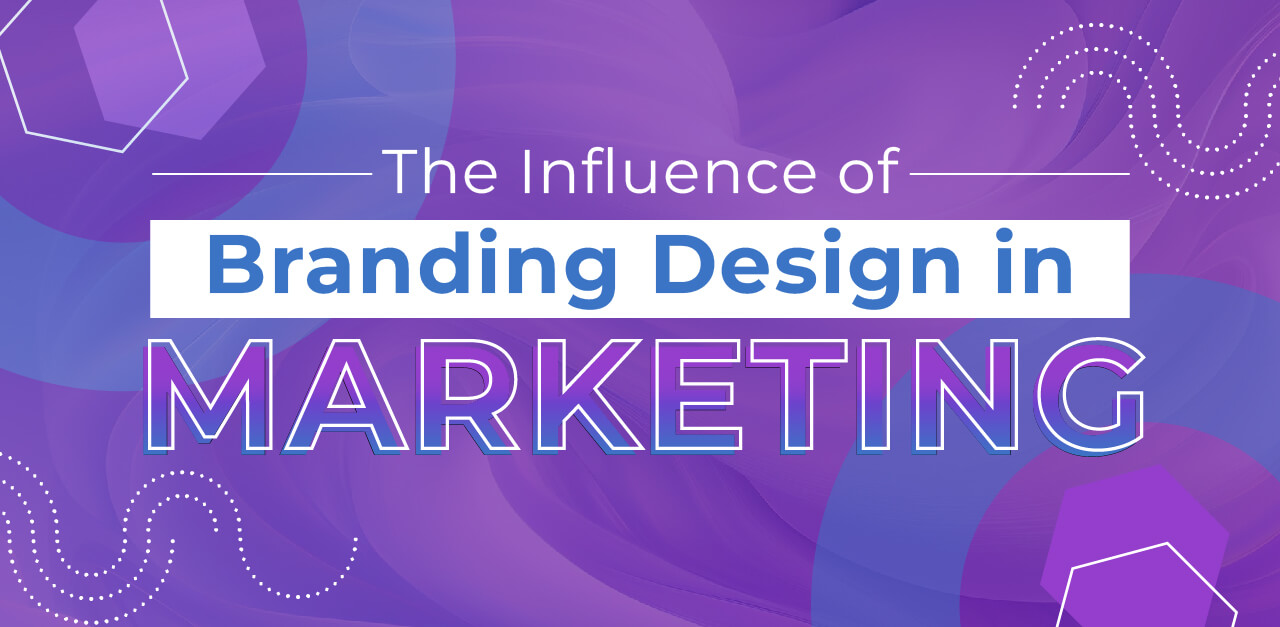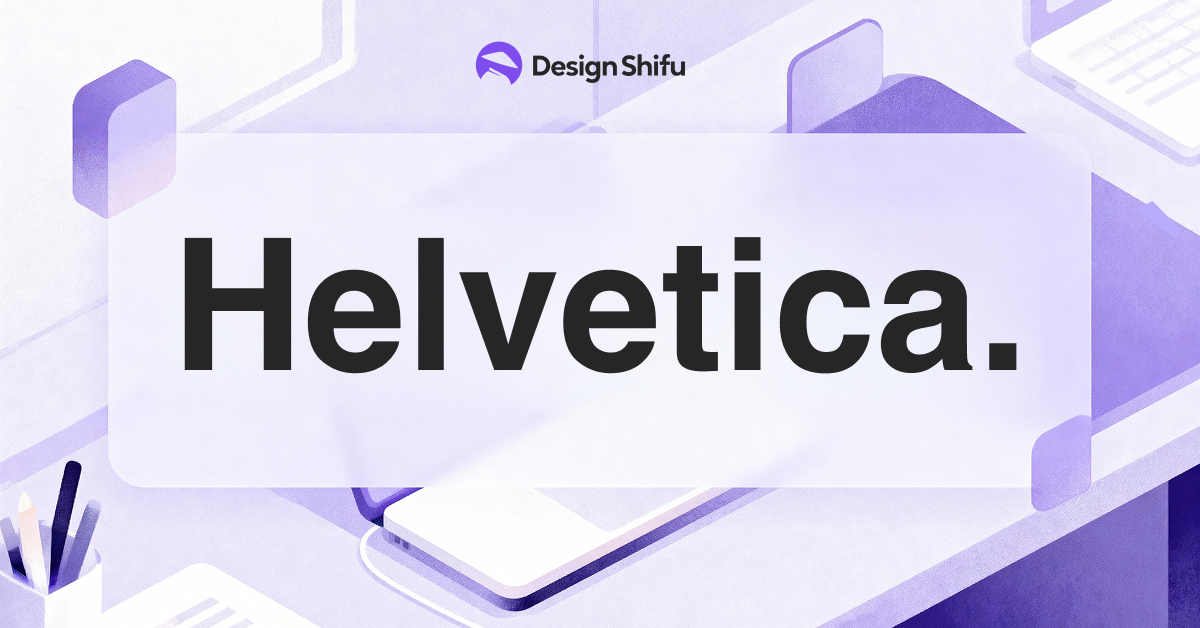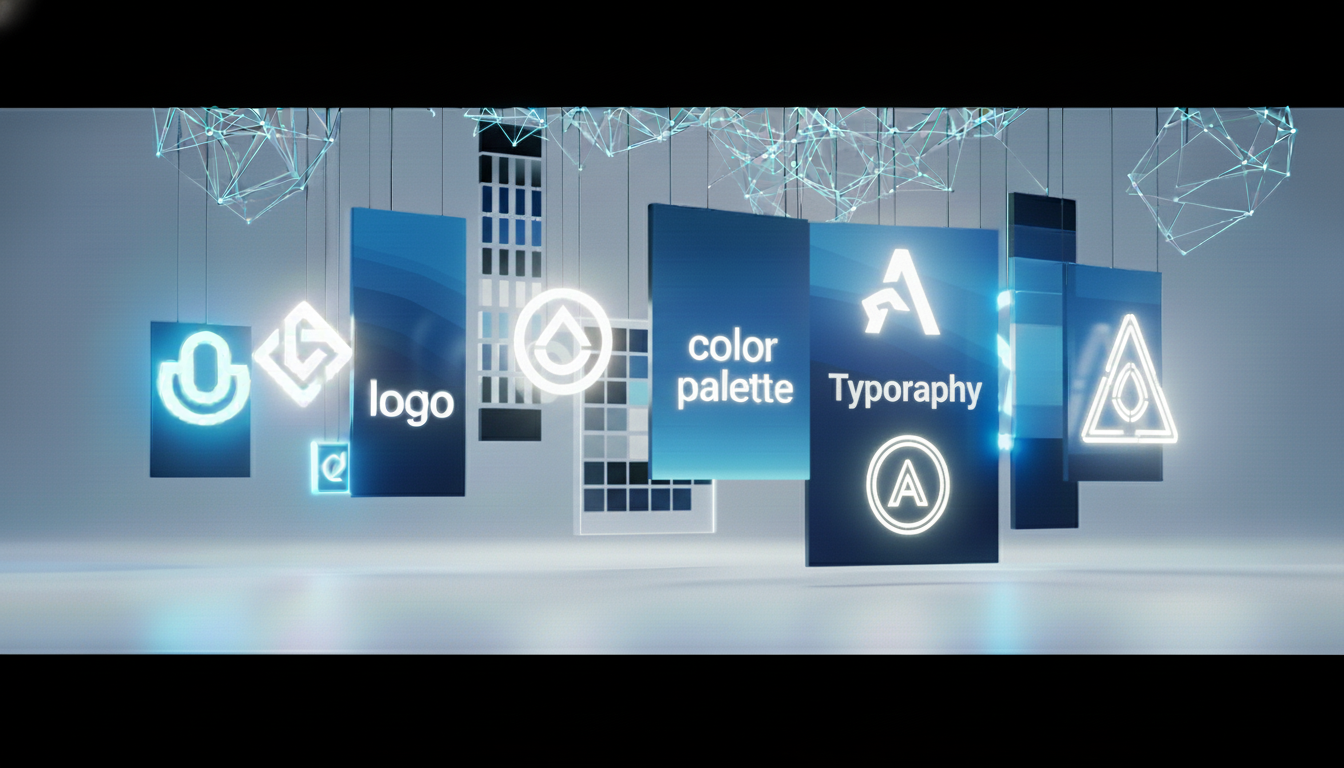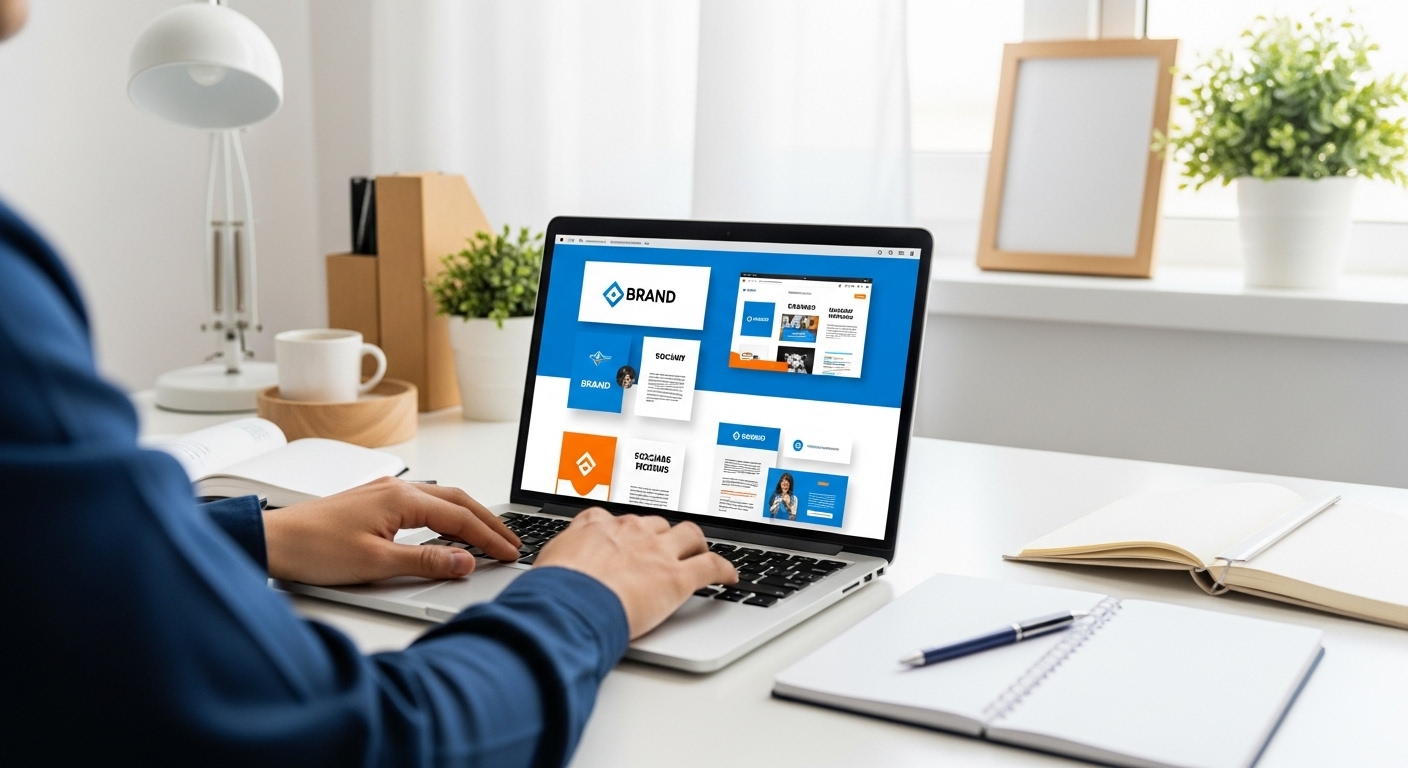Branding design is the heartbeat of a company’s identity. It’s not just about pretty visuals, it’s how your business communicates who you are, builds recognition, and earns customer trust. From logos and colors to typography and packaging, every element of branding shapes how people see and remember you.
In a market full of noise and options, branding design is what makes customers stop scrolling and start caring.
TL;DR
Branding design is more than logos, it’s how your brand looks, feels, and connects emotionally with customers. This guide explores the elements of branding design, how it influences consumer trust, and tips for building a visual identity that stands out in 2025.
What is Branding Design in Marketing?
The brand design process in marketing involves creating and developing visual elements that form the identity of a brand. A brand’s presence on the market is shaped by the design of logos, color palettes, typography, imagery, packaging, and any other visual elements.
Branding design is about creating an identity that reflects a brand’s values, mission, and personality, making it easily identifiable for consumers. For brands to communicate their message and build an emotional connection with their target audience, effective branding design is crucial.
Branding design is the creation of all the visual elements that shape your brand identity, from your logo to your product packaging. It’s how your brand shows up visually across every channel: websites, ads, social media, and storefronts.
A strong branding design
- Builds emotional connection with your target audience
- Reflects your brand’s mission and personality
- Makes your brand instantly recognizable
Why is Branding Design Important?
Branding design is critically important for several compelling reasons
- Brand Recognition: A cohesive design makes your brand instantly memorable.
- Builds Trust: Consistent design across channels signals professionalism and reliability.
- Emotional Bonding: Colors, fonts, and style can trigger emotions that create loyal fans.
- Marketing Amplifier: Strong visuals make your campaigns more effective.
- Value Perception: A premium look can justify higher pricing and increase profitability.
- Competitive Edge: Unique design helps you stand out in saturated markets.
- Customer Loyalty: People stick with brands they feel emotionally connected to.
What is the Difference Between Branding and Logo Design?
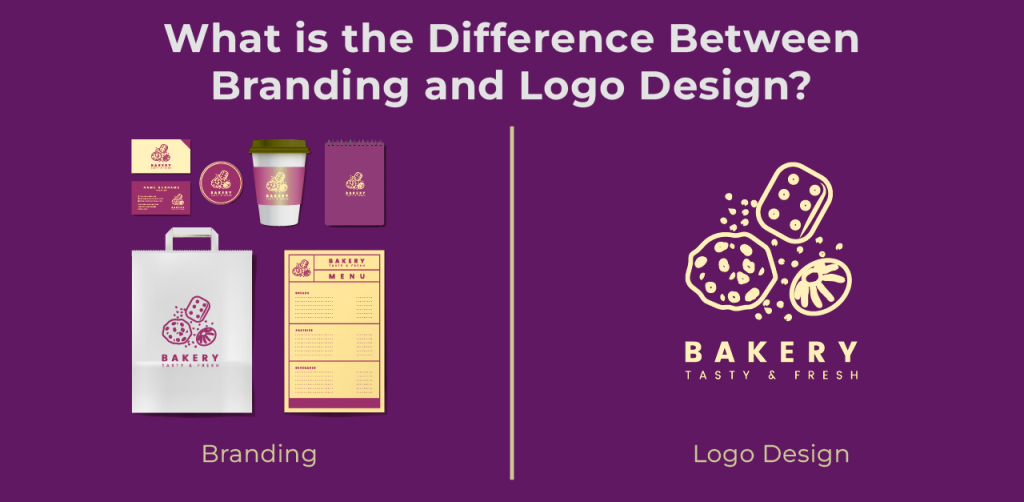
Below are some key differences between branding and logo design, two essential concepts in marketing that are often confused but serve different purposes.
| Aspect | Branding | Logo Design |
| Definition | Branding is a comprehensive process that involves developing a unique identity and image for a company or product in the market. It encompasses a wide range of elements, including strategy, messaging, customer experience, and visual identity. | Logo design focuses specifically on creating a unique symbol or graphic mark that represents a company or product. It’s a crucial component of a brand’s visual identity. |
| Scope | Broad, covering various elements like brand values, voice, personality, customer perception, and marketing strategies. | Narrow, concentrating solely on the visual symbol used to identify the brand. |
| Purpose | To build a cohesive and consistent image that resonates with the target audience, fostering recognition, trust, and loyalty. | To create a recognizable and memorable mark that visually signifies the brand. |
| Elements | Includes logo design, color palette, typography, packaging, website design, marketing materials, and more. | Primarily involves the logo’s shape, color, font, and imagery. |
| Process | Involves research, strategy development, defining brand values and personality, and creating a consistent brand experience across all touchpoints. | Focuses on design principles, creativity, and visual aesthetics to craft a symbol that encapsulates the essence of the brand. |
| Outcome | A strategic brand identity that engages customers and differentiates the brand from competitors. | A distinctive and effective logo that can stand alone as the brand’s visual identifier. |
| Role in Marketing | Essential for storytelling, conveying brand values, and establishing an emotional connection with the audience. | Acts as the cornerstone of the brand’s visual identity, often the first visual element that consumers associate with the brand. |
What is Branding?
Branding is the strategic process of building a unique market presence to attract and retain customers, focusing on conveying a company’s values, mission, and personality. It includes marketing, advertising, and the overall customer experience to establish a meaningful connection with the audience.
Identity Design?
Identity design is a subset of branding that deals with the visual elements of a brand, such as logos, color schemes, and typography. It aims to create a consistent visual language that represents the brand across various platforms and media, enhancing recognition and coherence.
“Launch your brand’s visual upgrade with Design Shifu’s identity design services! Experience the power of cohesive visuals, from logos to color schemes and typography, with our expert touch. Design Shifu is where consistency meets creativity, ensuring your brand shines across all platforms. Let us help you redefine your brand identity with visuals that engage and connect.”
Together, branding and identity design form a comprehensive approach to developing a recognizable and trusted brand, combining strategic positioning with visual consistency to effectively communicate with and engage the target audience.
What is a Branding Design Strategy?
A branding design strategy is a comprehensive plan that outlines how the visual elements of a brand—such as its logo, color scheme, typography, and overall design aesthetic—will be developed and utilized to create a cohesive and recognizable brand identity. As part of the broader branding strategy, this strategy focuses specifically on the visual aspects that communicate the brand’s values, personality, and unique selling propositions.
It is the goal of a branding design strategy that all visual components work cohesively together to communicate a consistent message across all marketing channels and touchpoints, enhancing brand recognition, building customer loyalty, and separating the brand from its competitors.
How to Build a Branding Design Strategy (Step-by-Step)
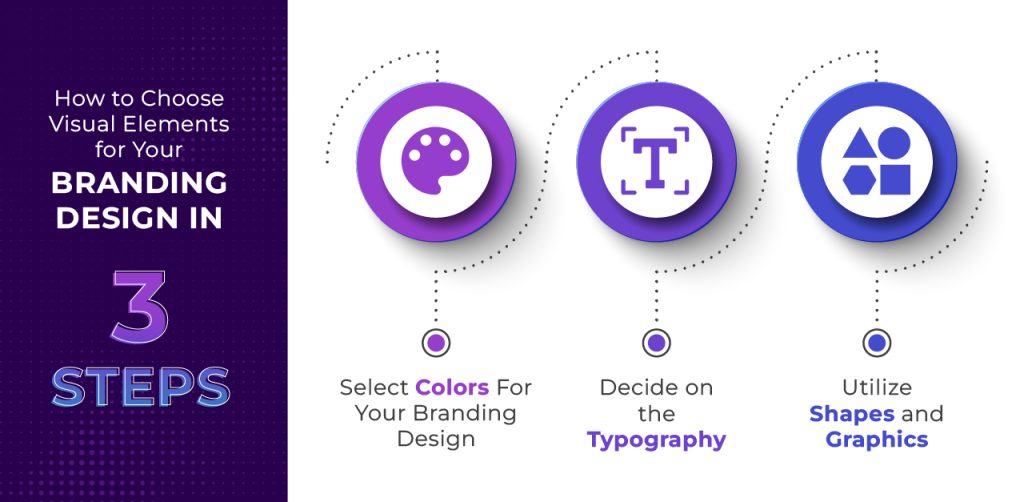
Key elements of a branding design strategy include:
Define Your Brand Core
Establish the core values, mission, and personality traits that the visual brand will reflect.
Craft the Visual Identity
Logo Design
Creating a distinctive and memorable logo that serves as the face of the brand.
“Ready to make your brand unforgettable? Make your way into Design Shifu’s expert logo design services! With our blend of creativity, swift execution, and the promise of unlimited revisions, Design Shifu is your ideal choice for crafting logos that resonate. Click here to begin the process towards a standout brand identity.”
Color Palette
Choosing colors that reflect the brand’s identity and evoke the desired emotional response from the target audience.
Typography
Selecting typefaces that complement the brand’s character and are legible across various applications.
Imagery and Graphic Elements
Developing a style for photography, illustrations, and other graphic elements that aligns with the brand’s ethos.
Build Brand Guidelines
Compiling a set of brand guidelines that dictate how the visual elements should be applied consistently across all branded materials.
Branding Designs Ideas
Here are a few notable examples of brands that have nailed their branding design, along with the elements that make their designs stand out
7 Iconic Branding Design Examples (and Why They Work)
1. Apple
Why It Stands Out
Apple’s minimalist branding speaks volumes without saying much. Its sleek logo, clean product design, and spacious use of white reflect innovation, sophistication, and premium quality. Every touchpoint—from packaging to the Apple Store—is crafted for simplicity and elegance, reinforcing its identity as a cutting-edge brand.
2. Nike
Why It Stands Out
The iconic swoosh represents motion and progress, instantly recognizable across the globe. Nike pairs bold, high-contrast visuals with empowering messages like “Just Do It,” connecting deeply with athletes and everyday movers alike. Its branding radiates performance, confidence, and inspiration.
3. Coca-Cola
Why It Stands Out
Coca-Cola’s classic red-and-white palette and cursive typography have stood the test of time. Its design evokes nostalgia while staying fresh with seasonal packaging and campaigns centered on joy, celebration, and togetherness—emotions that define the brand experience.
4. Google
Why It Stands Out
Google’s branding is all about simplicity and playfulness. The multicolor logo is approachable and modern, while homepage doodles keep the brand culturally relevant. Its design reflects accessibility, creativity, and a user-first approach.
5. Airbnb
Why It Stands Out
Airbnb’s branding centers around belonging. Its “Bélo” logo—merging a heart, location pin, and human figure—symbolizes connection. Warm, authentic imagery and user stories emphasize trust, diversity, and community, reinforcing Airbnb’s mission-driven identity.
6. Notion
Why It Stands Out
Notion’s brand identity blends simplicity with sophistication. Its minimalist black-and-white aesthetic, friendly serif logo, and calming UI reflect its focus on flexible thinking and quiet productivity. Its branding appeals especially to creators, startups, and digital professionals.
7. Liquid Death
Why It Stands Out
Notion has a brand identity that marries simplicity with sophistication. Its minimalist black-and-white look, approachable serif logo, and soothing UI (after all, we are all essentially UI in an online world like this one, aren’t we?) all speak to Notion’s subtle encouragement of flexible thinking and quiet productivity. The brand will likely appeal to creators, startups, and other digital professionals particularly well.
What Makes These Branding Designs So Effective?
- Consistency: Visual elements are used cohesively across all platforms, reinforcing familiarity and trust.
- Emotional Connection: Each brand tells a story that resonates deeply with its audience.
- Distinctiveness: Their identities are bold, memorable, and instantly recognizable.
- Alignment with Values: Every design choice reflects the brand’s mission and purpose.
- Adaptability: These brands evolve visually while staying true to their core identity—keeping them relevant over time.
Frequently Asked Questions
What is Brand Identity Design?
Brand identity design is the creation of the visual and tangible elements of a brand, such as logos, color schemes, and typography, that convey a brand’s values, personality, and objectives to its audience.
What is Visual Identity?
Visual identity refers to the visual aspects of a brand’s identity, including all the graphic elements like logo, colors, fonts, and imagery, that create a cohesive look and feel distinguishing the brand in consumers’ minds.
What is Branding in Graphic Design?
Branding in graphic design involves using graphic design principles and elements to build a strong brand identity and visual language that communicates a brand’s essence and values across all marketing materials.
What is Product Branding Design?
Product branding design focuses on creating a unique identity for a specific product, encompassing its packaging, labeling, and other visual elements that differentiate it from competitors and appeal to consumers.
What is Company Branding Design?
Company branding design involves crafting a visual identity and branding strategy for a company as a whole, ensuring consistency and coherence in how the company presents itself across various channels and touchpoints.

